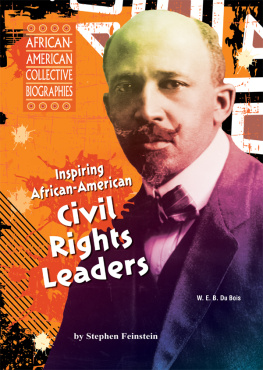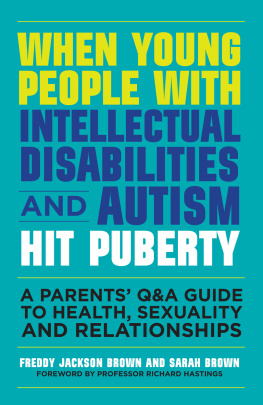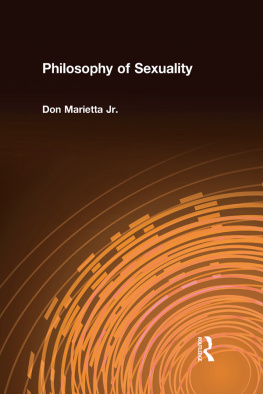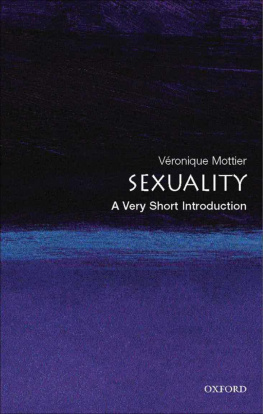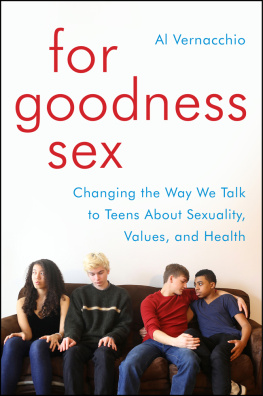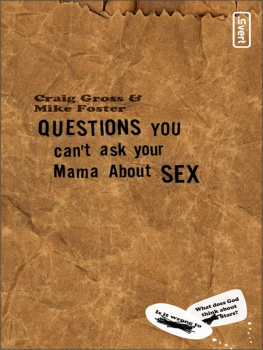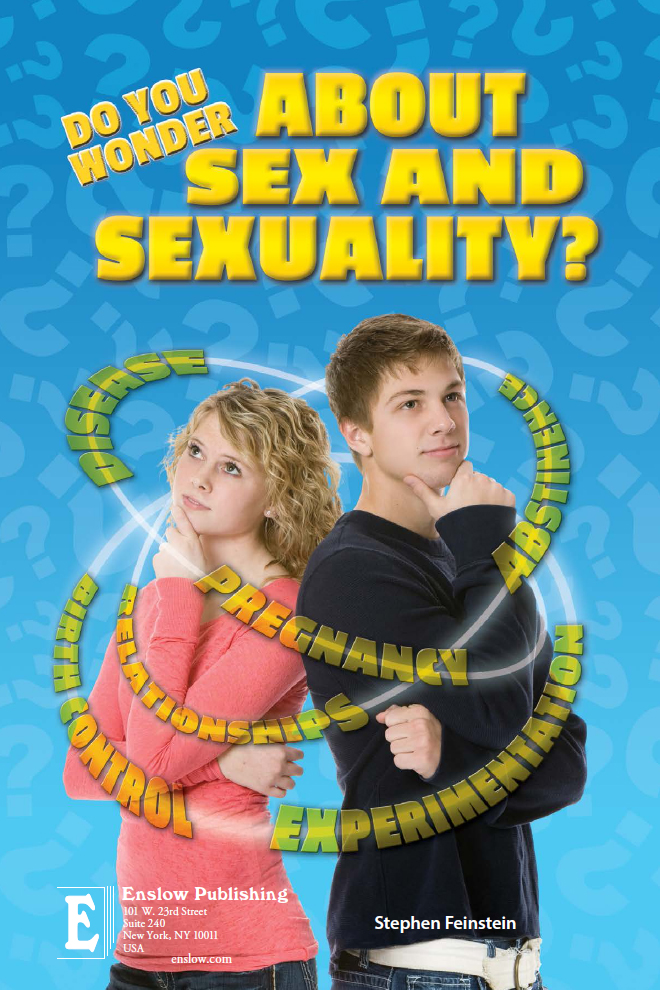Published in 2016 by Enslow Publishing, LLC
101 W. 23rd Street, Suite 240, New York, NY 10011
Copyright 2016 by Stephen Feinstein
All rights reserved.
No part of this book may be reproduced by any means without the written permission of the publisher.
Library of Congress Cataloging-in-Publication Data
Feinstein, Stephen.
Do you wonder about sex and sexuality? / Stephen Feinstein.
pages cm. (Got issues?)
Includes bibliographical references and index.
Summary: Discusses general sexual educationProvided by publisher.
ISBN 978-0-7660-6989-3
1. Sex instruction for teenagers. 2. SexJuvenile literature. I. Title.
HQ35.F385 2016
613.90712dc23
2015011977
Printed in the United States of America
To Our Readers: We have done our best to make sure all Web site addresses in this book were active and appropriate when we went to press. However, the author and the publisher have no control over and assume no liability for the material available on those Web sites or on any Web sites they may link to. Any comments or suggestions can be sent by e-mail to .
Portions of this book originally appeared in the book Sexuality and Teens: What You Should Know About Sex, Abstinence, Birth Control, Pregnancy, and STDs.
Photo Credits: Ake Sak/Shutterstock.com, .
Cover Credits: James Flint/Shutterstock.com (teenage couple).
Disclaimer: For many of the images in this book, the people photographed are models. The depictions do not imply actual situations or events.
Contents
Chapter 1 Thinking About Sex
Chapter 2 Contraception
Chapter 3 Choices for Pregnant Teens
Chapter 4 Varieties of STDs
Chapter 5 Sex Education Programs for Teens
Chapter Notes
Glossary
For More Information
Further Reading
Index
Thinking About Sex
F ifteen-year-old Justins high school, one of the largest in Chicago, has an enrollment of more than four thousand students. According to Justin, the students are engaging in so much sexual activity that he sometimes wonders if there is time for anything else. It often seems to Justin that kids are hooking up all over the place, all the time, and whenever they get the chance. He believes they hook up more at their houses than anywhere else, but they also hook up at parties, in school, at movies, at the mall, and even at football games.
Justin, a fictional character, may have an overactive imagination and is perhaps greatly exaggerating the number of sexual encounters that are actually occurring among his schoolmates. But the fact is that todays teens are much more likely to engage in sexual activity than teenagers in the not-so-distant past.
There once was a time in America when it was considered wrong to have sex before marriage. This was especially true for teenagers. Today some people still hold this view, but it is not as widespread, and it may be hard for you to imagine. But in the days before the 1960s, most young people abided by the strict rules of the day regarding sexual behavior. You had to follow the rules in order to be considered a moral person.
Young peopleespecially young womenwho disregarded the rules about premarital sex risked parental disapproval or punishment. Abortion was illegal in the United States. Young women needing an abortion, with or without their parents knowledge, would go to Mexico or even as far as London to get the procedure. Often the parents of a girl who accidentally became pregnant would send their daughter far away to a home for unwed mothers. There, the girl would go through her pregnancy among strangers. Upon giving birth, she would usually be pressured by her family to give the baby up for adoption.
Then, almost overnight, nearly everything about sexual behavior changed.
The Counterculture of the 1960s
In the 1960s, good economic conditions made it easy for young people to put off decisions about marriage and careers. Housing, food, and energy were cheap. A youth counterculture, many members of which were referred to as hippies, sprang up to protest limits on personal freedoms. Many marched in huge demonstrations against the Vietnam War, which growing numbers of Americans considered to be an unjust war. This cultural revolution was partly a sexual revolution. Young people felt free to question the traditional values of their parents, lawmakers, and religious leaders, especially those values relating to sexuality.
According to writer Kristin Luker:
The sexual revolution took place in an atmosphere in which many young people were both critical of established authority and suspicious of the motives of people who wanted to enforce traditional values. Young people were confident their values were authentic and noble ones while their elders were guilty of hypocrisy on a society-wide scale. And a remarkable number of their elders seemed to agree. Both the sexual revolution, and the gender revolution of which it was part, challenged everything that an older generation had taken for granted about men and women, gender and sex.
During the 1960s, a cultural shift occurred that had American youth questioning the establishment. Instead of following a traditional path of marriage and family, many young people explored free love.
The Pill, Free Love, and STDs
A spirit of free love, espousing the power of love and the beauty of sex as a natural part of ordinary life, swept the land. Helped along by the introduction of an oral contraceptive known as the pill, free love became a part of everyday life for many young people.
The first birth control pill, called Enovid, became available in 1960. According to historian Nancy L. Cohen, Within five years, six million American women were on the pill. With one quick visit to a doctor, a woman immediately gained sole and exclusive power over her fertility, a power that had eluded her sex since... well, since forever. When the birth control pill became wildly available in the early 1970s, premarital sex became more common. Birth control information became widely available. By 1973, more liberal attitudes toward abortion led to a major milestone in womens rightsthe right to choose. That year, the United States Supreme Court, in Roe v. Wade, ruled that laws prohibiting abortion violated a womans right to privacy.
Sexual experimentation became popular, with many young people choosing serial monogamy, a series of relationships with one partner at a time. Some even chose to have multiple sexual partners rather than a monogamous relationship.
As the sexual revolution picked up steam, people learned the hard way that there was a price to pay for free lovesexually transmitted diseases (STDs). There was a dramatic increase in cases of gonorrhea, syphilis, and herpes by the late 1960s and throughout the 1970s. So free love often wasnt free. By the mid-1980s, people became aware of the spread of a new and deadly STD known as AIDS (acquired immunodeficiency syndrome). Although virtually all STDs except herpes were curable, HIV/AIDS was fatal. For many, the sexual revolution lost its appeal. However, by the late 1990s the tide turned again with the development of more effective ways of controlling the AIDS infection.






